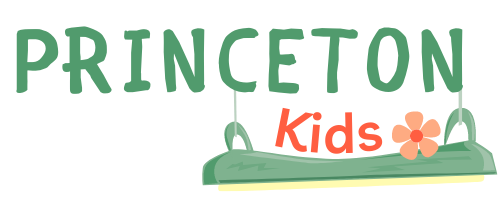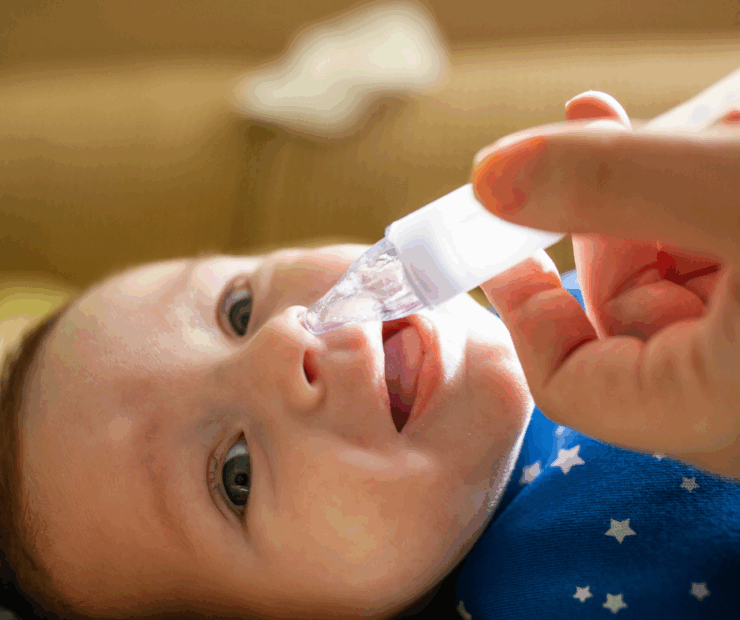Sleeping with a congested nose can be hard for babies or younger infants, but it’s especially heartbreaking for any parent out there. Seeing your child tossing and turning, frequently waking at night, and not breathing comfortably, all you could think of is how to get them to sleep better. The good news here is that there are safe, soothing ways to help your baby have better sleep, even when they are suffering from congestion.
In this article, we’ll mainly tackle how to sleep congested, focused on your little ones, learning what’s normal, what’s not, and what gentle remedies you can give for your little ones. Since babies can’t blow their noses, nasal care is super important for them.
One essential tool that helps parents a lot of times is a baby nasal aspirator. This gentle device clears mucus from those tiny noses, helping babies breathe comfortably during sleep.
Why Congestion Feels Worse When Babies Lie Down
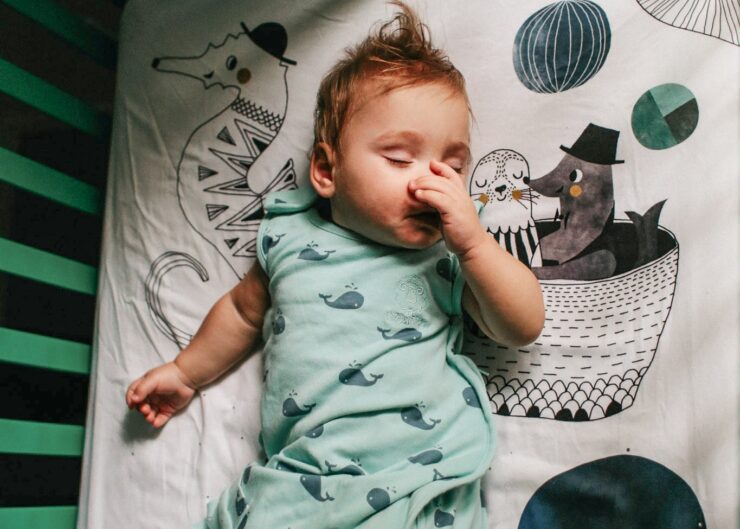
If you have ever noticed that when a baby lies flat on their back, the congestion gets worse. The key player here is gravity, because when they’re lying on their back, the nasal passages can slightly swell, and the mucus doesn’t go down easily and gets all clogged up. For this reason, congestion can feel worse during bedtime or naps.
Having trouble feeding, waking up frequently, and becoming more fussy are normal signs of nighttime congestion in babies. Although it could be uncomfortable for your little one, it’s usually temporar,y and it can be managed with the right care and a lot of patience.
Elevating Your Baby’s Head: A Simple Way to Breathe Easier
Moving forward with how to make your child more comfortable sleeping with congestion. can have a big impact on their breathing, but be sure to continue with the safe sleeping principles. So, rather than putting a pillow or wedge directly under your child, you can raise their mattress slightly using a rolled-up towel or blanket.
A slight change in angle can allow their mucus to drain more naturally and decrease the nasal stuffiness that makes it more difficult for them to sleep. For younger infants, keeping them upright for a certain time before bedtime or letting them take a nap in your arms with supervision can help them a lot in getting enough rest and relieve the congestion before laying them down.
Using a Humidifier or Steam to Loosen Mucus

Air indoors is usually dry, and this makes the congestion worse. Using a cool-mist humidifier in your child’s room adds a gentle, moist ai,r which can be helpful for their dry nasal passages. This also helps to remove the mucus more easily.
In case you don’t have a humidifier, there is another alternative. Steaming or steam therapy also helps achieve the same goal of keeping their nasal passages moist and makes it easier for them to breathe.
Steaming is done for about 10 – 15 minutes, sitting in the bathroom with the hot shower running, reminding you that you do not put them directly under the shower, just sit there with the running shower and breathe in the steam.
The Power of Saline Sprays and Nasal Rinses
So, hear me out, this is probably the most effective remedy for babies with congestion, a saline nasal spray or drops. These are safe for infants since they are technically just a salt-water solution, it helps moisten their nasal passages and break down the mucus, making it easier to clear out their mucus with a nasal aspirator for newborns. To safely use it here are some tips and tricks:
- Keep your baby on their back with a slightly tilted head
- Carefully apply a few drops or a spray of the saline solution to each nostril
- Wait a few seconds for the saline to work
- Then, follow up with a nasal aspirator for the newborn to carefully remove the mucus.
This simple yet powerful routine can quickly provide relief for your baby, making it easier for them to breathe through the night. An important reminder, never forget to clean your aspirator before and after each time that you use it to keep it clean.
Staying Hydrated Throughout the Day
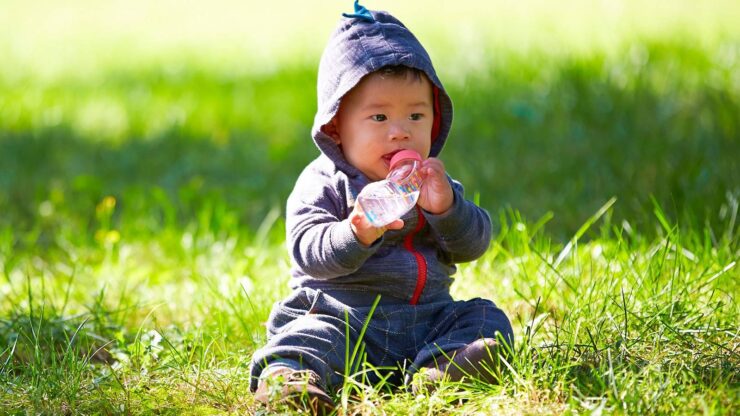
If you didn’t already know, there’s a reason why many people tell you to drink a lot of water whenever you have a cold, and keep your baby hydrated whenever they are congested.
Mainly because the fluids help thin the mucus out and support the body’s natural healing. For babies under six months, breast milk and formula milk should be their main source of hydration; for older babies, those extra sips of water throughout the day can also help.
If in case your baby is breastfeeding, making them feed more frequently whenever they are congested helps in making them feel comfortable and getting them all that fluid. The act of sucking can also help open their nasal passages temporarily, which makes them breathe easier and have a better quality of sleep afterwards.
When to Use (and Avoid) Medication
When you’re exploring your options and figuring out how to sleep when congested, many adults turn to over-the-counter medications, but for babies, it could be a lot different. Decongestants or cold medicines should never be given to infants or toddlers under 2 years old without any medical advice or prescription from your doctor. These products can be harmful and cause serious side effects.
What you could do instead is to rely on the natural remedies in the meantime. Humidified air, saline drops, and suctioning with a nasal aspirator are a good start. If your baby’s congestion seems pretty severe, persistent, or accompanied by other symptoms like fever or difficulty in breathing, you should call your doctor immediately.
The Role of Gentle Comfort and Environment
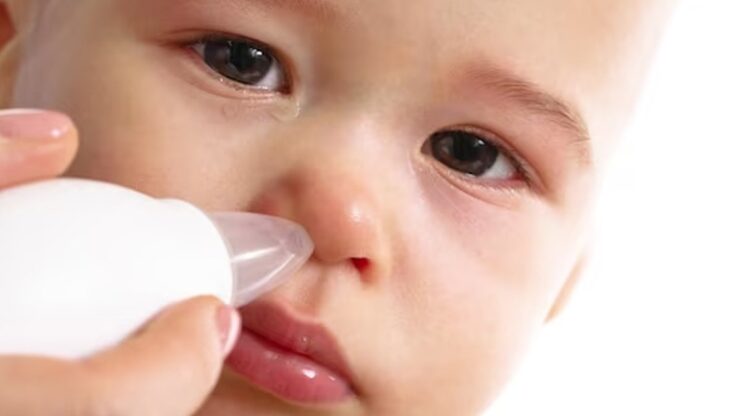
More than anything else, the environment plays an important role in helping your baby fall asleep and stay asleep longer, even when they are troubled with congestion. Keeping the room a bit cooler and quieter, keeping the lights dim, and dressing them in comfortable clothes plays a huge role here.
Some background sounds like white noise can be surprisingly effective because it resembles the sound of the womb and masks other disruptive sounds that often disturb your baby’s rest. Gentle rocking, lullabies, or rhythmic shushing can also help calm them down when they’re struggling with congestion.
Most importantly, make sure that your baby’s sleeping space is free from any loose beddings or pillows, keeping it flat and firm as well.
When to Consult a Doctor About Your Baby’s Congestion

Mild congestion is pretty common in babies, especially during those colder months or seasonal changes, but there are times when medical attention is necessary. When you see these symptoms, make sure to have a word with your doctor:
- Breathes rapidly or has trouble breathing
- Signs of dehydration
- Persistent cough that lasts more than a week
- High fever or appears unusually lethargic
- Has green or bloody mucus that lasts for more than a few days
Your pediatrician can help you determine if there’s a possible infection, allergy or any other underlying issue that could need treatment. In some cases, they could recommend a professional suctioning or prescribe a baby-safe saline solution for daily use.
Conclusion
Having a congestion is hard even for adults, but imagine seeing it in your child. It’s uncomfortable and heartbreaking. But by understanding how to sleep congested safely and using gentle remedies like a nasal aspirator for newborns, saline drops, and humidifiers, you can make a huge difference in how comfortable they’ll feel and also in the quality of sleep they are getting through this time.
Your calming and consistent care, along with these adjustments in your child’s sleeping environment, will help them breathe easier during their nighttime sleep. But the most important thing here is your loving presence and gentle touch that will provide them the reassurance that everything’s going to be okay. With time, congestion will clear out, and the peaceful and fun nights will return.
